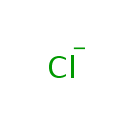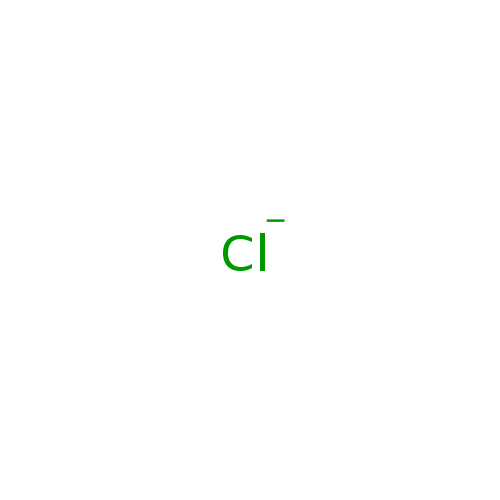| References: |
- Evans RB: Chlorine: state of the art. Lung. 2005 May-Jun;183(3):151-67. Pubmed: 16078037
- Fainsinger RL: Palliative care in Edmonton. Support Care Cancer. 1995 Mar;3(2):91-2. Pubmed: 7539703
- Harrison NL: Mechanisms of sleep induction by GABA(A) receptor agonists. J Clin Psychiatry. 2007;68 Suppl 5:6-12. Pubmed: 17539703
- Kahle KT, Wilson FH, Lalioti M, Toka H, Qin H, Lifton RP: WNK kinases: molecular regulators of integrated epithelial ion transport. Curr Opin Nephrol Hypertens. 2004 Sep;13(5):557-62. Pubmed: 15300163
- Kanehisa, M., Goto, S., Sato, Y., Furumichi, M., Tanabe, M. (2012). "KEGG for integration and interpretation of large-scale molecular data sets." Nucleic Acids Res 40:D109-D114. Pubmed: 22080510
- Keseler, I. M., Collado-Vides, J., Santos-Zavaleta, A., Peralta-Gil, M., Gama-Castro, S., Muniz-Rascado, L., Bonavides-Martinez, C., Paley, S., Krummenacker, M., Altman, T., Kaipa, P., Spaulding, A., Pacheco, J., Latendresse, M., Fulcher, C., Sarker, M., Shearer, A. G., Mackie, A., Paulsen, I., Gunsalus, R. P., Karp, P. D. (2011). "EcoCyc: a comprehensive database of Escherichia coli biology." Nucleic Acids Res 39:D583-D590. Pubmed: 21097882
- SCHULTZ, S. G., WILSON, N. L., EPSTEIN, W. (1962). "Cation transport in Escherichia coli. II. Intracellular chloride concentration." J Gen Physiol 46:159-166. Pubmed: 13909522
- Tarran R, Donaldson S, Boucher RC: Rationale for hypertonic saline therapy for cystic fibrosis lung disease. Semin Respir Crit Care Med. 2007 Jun;28(3):295-302. Pubmed: 17562499
- Zifarelli G, Pusch M: CLC chloride channels and transporters: a biophysical and physiological perspective. Rev Physiol Biochem Pharmacol. 2007;158:23-76. Pubmed: 17729441
|
|---|


